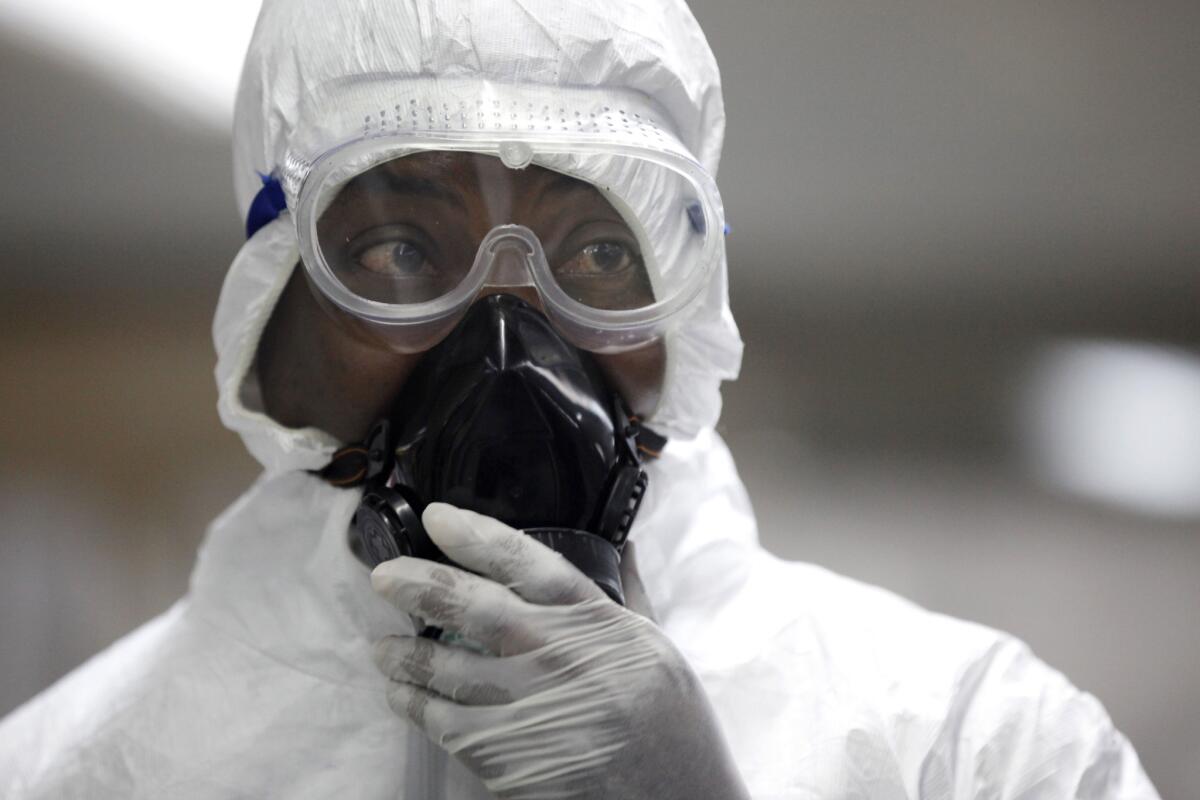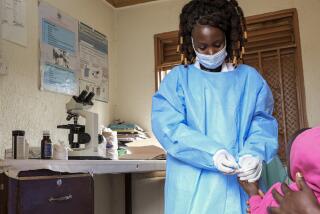The economics of Ebola, or why there’s no cure

- Share via
Of all the horrific features of Ebola disease--its deadliness, its virulence--perhaps the scariest is that there’s no cure.
This is not the same thing as saying it’s incurable or untreatable. In fact, scientists are fairly confident they can develop effective treatments and a vaccine, given a bit of time and somewhat more money. So the question is why that hasn’t happened.
The simple answer, as Beth Skwarecki of PLoS.org explains, can be found in economics. The Ebola virus doesn’t rank as a major disease. As the accompanying chart shows, measles strikes about 20 million people a year and kills more than 120,000; cancer adds 14.1 million cases a year and kills 8.2 million; HIV infects 2.5 million people a year and kills 1.7 million. (The cancer statistics are from 2012 and the HIV numbers from 2011.) The current outbreak of Ebola numbered 1,323 cases and 729 deaths.
An outbreak on that scale--leaving aside that it occurs in the poorest region of the world--isn’t threatening enough to grab the attention of pharmaceutical R&D departments. That doesn’t necessarily make Big Pharma the villain of the piece, since it’s hard to argue that a rare disease that erupts sporadically should be a higher priority than, say, malaria, which strikes 220 million people a year and kills 660,000.
Researchers says the current Ebola outbreak, which has proven especially hard to control, has focused new attention on the need for a treatment.
Three possible treatments are under study by researchers funded by the National Institutes of Health, with good prospects for a human clinical trial this year.
Some biotech companies are trying to tweak the economics of the disease by addressing fears that it could be a bioterror threat, which would turn the federal government into a well-heeled customer for their remedies. The Centers for Disease Control and Prevention lists Ebola as a “Category A,” or “high-priority” threat, along with smallpox and plague, because it can be disseminated easily and has a high mortality rate.
Among the problems faced by Ebola fighters are economic and cultural factors that interfere with its treatment and containment. As Skwarecki reports, the chief weapons in limiting Ebola’s spread are isolating the disease’s carriers from others and quarantining and observing those thought to be exposed. Remedial actions like hydration could also reduce the death toll, and education of rural populations to keep them from eating bats (thought to be among the main carriers of the virus) or handling the bodies of deceased Ebola victims is also important.
But all those steps are difficult in West Africa. “This is not just a medical or public health problem,” Margaret Chan, director-general of the World Health Organization, observed last week. “It is a social problem. Deep-seated beliefs and cultural practices are a significant cause of further spread and a significant barrier to rapid and effective containment.” Fears of the disease and of community reactions have forced some chains of transmission “underground,” she reported.
“Because of the high fatality rate, many people in affected areas associate isolation wards with a sure death sentence, and prefer to care for loved ones in homes or seek assistance from traditional healers. Such hiding of cases defeats strategies for rapid containment.”
Keep up to date with The Economy Hub by following @hiltzikm.
More to Read
Inside the business of entertainment
The Wide Shot brings you news, analysis and insights on everything from streaming wars to production — and what it all means for the future.
You may occasionally receive promotional content from the Los Angeles Times.











